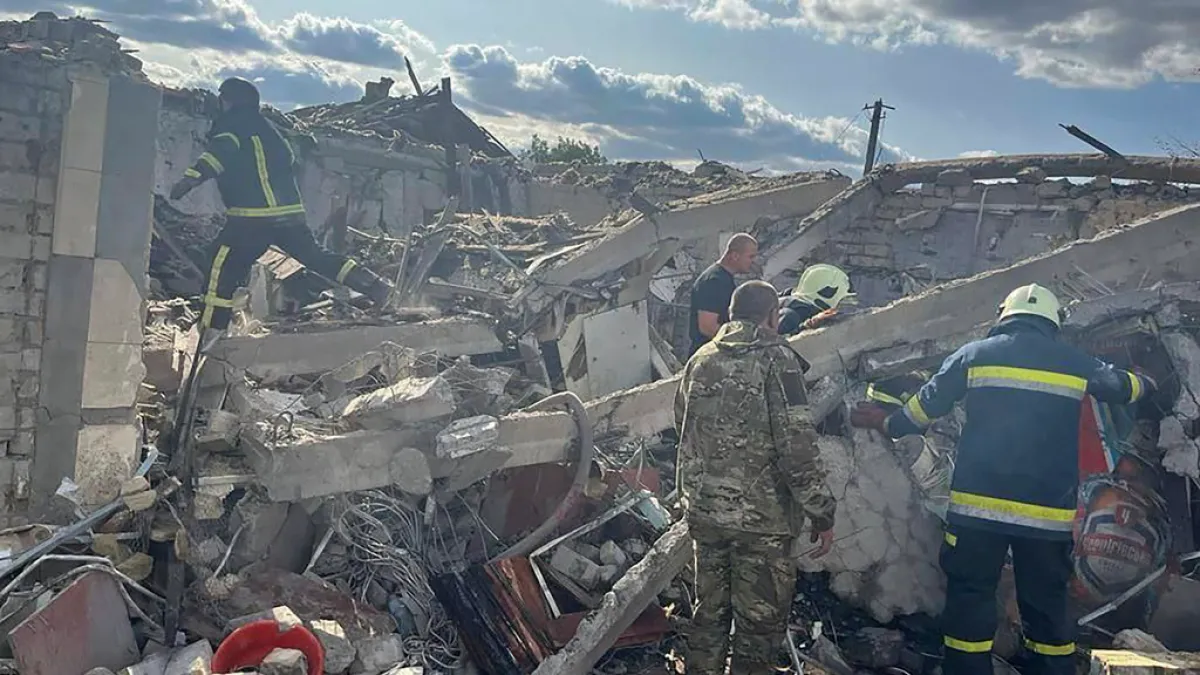A significant section of an oil storage facility in southern Russia is ablaze, reportedly due to a strike by a Ukrainian drone. Russian media states that four oil tanks caught fire, consuming 1,000 square meters (10,763 square feet). Russian authorities in the Bryansk region report no injuries.
The Bryansk governor reveals that the drone was intercepted near Klintsy, and its explosives subsequently detonated at the oil depot. This marks the second drone strike targeting Russian hydrocarbon facilities in the past two days.
A St Petersburg oil loading terminal was attacked on Thursday. Although Russian reports claim the drone was shot down without damage, Kyiv suggests that the assault, far from the Ukrainian frontier, signifies a strategic shift.
Minister Oleksandr Kamyshin confirms the strike, stating the object travelled 1,250 kilometers (776 miles) the previous night. At 06:40 local time, the Russian Ministry of Defense reports shooting down a Ukrainian drone over Bryansk. Regional chief Alexander Bogomaz later stated two more drones were destroyed without damage.

Flames erupt at the Klintsy oil depot, around 70 kilometers north of the Ukrainian frontier. Over thirty individuals were evacuated, with adjacent railway tracks enveloped in black smoke.
Global Concerns and Strategic Moves
Reportedly, a gunpowder factory was also targeted by a drone strike, hundreds of kilometers northeast of the Ukrainian frontier, near Tambov.
Ukraine’s intelligence source hints at impending assaults on Russian military targets, citing the concentration of Russia’s air defense and electronic warfare systems in occupied Ukrainian territory.
Despite warnings of ammunition shortages, Ukraine aims to produce one million drones this year. Kamyshin notes the $350 construction cost of the drone directed at St Petersburg.
German Defense Minister Boris Pistorius joins others in cautioning that Russia may escalate the conflict with Ukraine to a NATO member state within the next few years. He calls for making the Bundeswehr “war-ready.” citing daily Kremlin threats and estimating this probability between five to eight years.
NATO announces its largest exercise since the Cold War, involving approximately 90,000 soldiers. Steadfast Defender, with all 31 member states and Sweden, will commence next week. Swedish authorities warn against the possibility of conflict this month.
General Micael Byden, NATO’s commander-in-chief, aims to encourage reflection on personal circumstances and obligations, not to cause concern.
In October last year, the German Council on Foreign Relations predicted that Moscow could reconstitute its armed forces within six to ten years if it ceases intensive combat in Ukraine. At that point, NATO would be adequately equipped to repel a Russian assault.





